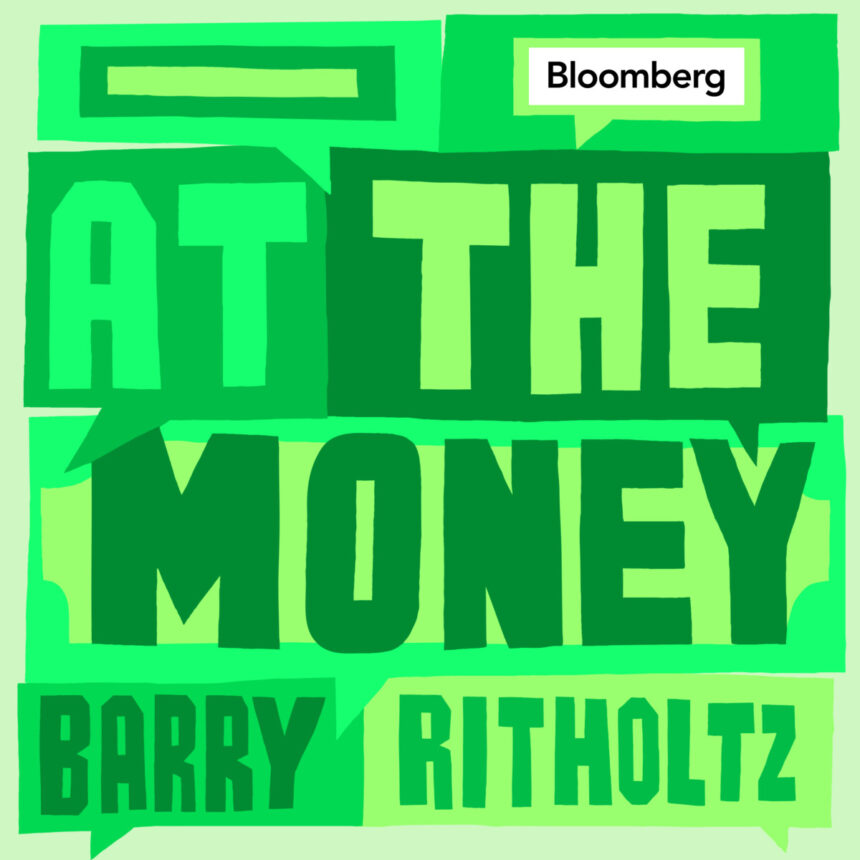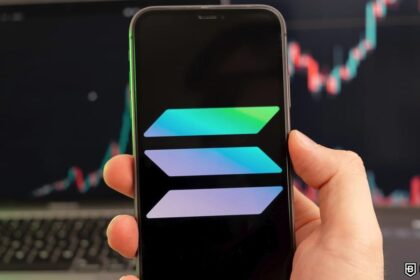At The Money: Getting Paid in Company Stock (July 23, 2025)
Equity-based compensation has become an increasingly popular form of compensation in the United States, especially in Tech and high-growth, VC-funded companies.
Full transcript below.
~~~
About this week’s guest:
Joey Fishman is a Senior Advisor at Ritholtz Wealth Management (RWM), where he assists clients with managing their stock, options, and equity compensation.
For more info, see: Personal Bio
~~~
Find all of the previous At the Money episodes here, and in the MiB feed on Apple Podcasts, YouTube, Spotify, and Bloomberg. And find the entire musical playlist of all the songs I have used on At the Money on Spotify
TRANSCRIPT: Understanding Equity Comp Joey Fishman
Equity based compensation has become an increasingly large part of the US labor landscape, especially in technology and high growth venture capital-funded companies.
I was at a recent employee benefits conference in Silicon Valley. I was shocked to hear from so many corporate benefit managers that a lot of their employees neglect to capitalize on their stock options or other types of equity compensation.
To help us unpack all of this and what it means for your compensation. Let’s bring in Joey Fishman. He’s an expert in equity-based compensation and Bend (previously Portland) Oregon, and he has clients ranging from Seattle and Redmond down to San Francisco and Silicon Valley.
Full disclosure. Joey is the equity compensation expert at my firm, and he is one of my partners.
So Joey, let’s start with the basics. What are the most common types of equity compensation plans today that companies are offering and how do these differ?
Joey Fishman: Thank you so much, Barry. The most comprehensive, the one that we see the most is restricted stock units.
Then followed by non-qualified stock option, it’s incentive stock options. Those three things tend to be the most frequent forms of equity compensation that we see these days.
Barry Ritholtz: RSUs, ESOPs, what are the difference between this alphabet soup of acronyms.
Joey Fishman: So ESOP actually is the employee stock option plan. And so that can include non-qualified stock options or incentive stock options.
Barry Ritholtz: What are the difference between those two?
Joey Fishman: The main difference between the two is that incentive stock options. If you thread the needle appropriately or correctly, you avail yourself to long-term capital gains tax treatment. Non-qualified stock options are a little bit different where you have to meet two different, thresholds in order to avail yourself to, to, uh, long-term capital gains tax.
One basic, primary way, and that is incentive stock options are reserved only for employees. (That comes from the treasury account). The non-qualified stock options that’s typically given to board members, consultants, other folks that have a participating activity within the firm itself, but they’re not necessarily an employee.
Barry Ritholtz: I remember a story about a guy who designed a logo for Facebook and they paid him in stock and it ended up being worth millions of dollars. I don’t know if that that sounds familiar. So, look, my firm is an employer; we issue equity participation. We have about 30 out of nearly 80 employees or partners. I understand the advantage of offering equity compensation, but I want to hear it in your terms. What are the advantages of equity versus cash from a corporate perspective?
Joey Fishman: I mean, not to sound cliche, but we’ve all heard the term that like culture, each strategy. That is very much the case in, in, in this endeavor.
It sets the tone, the right tone from the beginning. Employees are incentivized to grow the business, you know, put their heads down and get after it with less friction between, you know, management and themselves. They, they feel like they’re active participants in growing the business and they’ll be financially rewarded for doing so.
Barry Ritholtz: What are the disadvantages from a corporate perspective?
Joey Fishman: They are complex to administer. Uh, the regulatory environment is kind of a beast. And you do have to spend money on compliance to make sure that you’re threading the needle of all the various rules that apply depending on the various stock plan that you choose to, to employ.
Barry Ritholtz: So let’s say both a company and an employee say, Hey, this equity thing sounds attractive. How do you go about figuring out what’s the right mix of equity and, and actual cash compensation? How does this differ for employees at different levels within the company?
Joey Fishman: It’s more art than science, and so each company is going to have its own version of an equity comp stock plan.
The Nike’s of the world, they tend to get folks that are athletes and like to push themselves. So in some cases, they will offer these employees incentive stock options, which have a lot of leverage upfront. They also have the ability to, to choose RSUs or restricted stock units for folks that want to at least at the end of the day, guarantee that they’re going to have something tangible.
Other firms like Netflix, they, they give you the option to determine how much of your actual compensation that we’re going to give you each year can be dedicated to buying non-qualified stock options.
Broadly speaking, oil and gas typically uses RSUs financials, typically use RSAs (restricted stock awards) with healthy or juicy deferred comp packages. And then tech is very much reliant on options at the beginning. And then as the company grows and becomes more established, it switches to RSUs.
Barry Ritholtz: We’re talking about a variety of different ways to implement an equity-based compensation. What does this mean for taxes? It sounds like each one of these has its own set of tax ramifications for the employee.
Joey Fishman: They do, and it’s very hard, it’s very challenging to navigate all of it. It’s like playing a game of financial twister.
The goal at the end of the day is to get yourself available so that any realized gains from here on out or, or long-term capital gains tax treatment. Because at least there, you know, within the spirit and intent of the law, you have the ability, or at least some options to beat back that tax liability. Ideally, like you’re, you’re getting yourself to that place.
The ones that end up being most punishing, which, you know. Relatively speaking is, you know, folks that have non-qualified stock options or ISOs in, in the incentive stock option case, they may fall under what’s called AMT taxes, which is it. It’s an incredibly in spent expensive tax that’s levied on folks that is not always recoupable down the road. In non-qualified stock options, you may just find yourself completely in ordinary income tax rates. And you know, in some cases, you know, if you’re realizing a couple million dollars worth of non-qualified stock options and you live in the state of California, at the end of the day, you’re walking home with maybe 50 cents on the dollar.
The needles that have to be threaded to make yourself available for long-term capital gains tax treatment are hard. But if you can do it correctly, then the window opens up for your ability to at least chip away at that tax liability and keep more of that game when all is said and done.
Barry Ritholtz: Let’s talk about vesting schedules and the difference between a cliff or a graded vesting. When do these option plans actually show up as real assets to the employee?
Joey Fishman: To the employee? That’s a good question. Okay, so to the employee, they have to follow a vesting schedule and most work under a four-year vesting schedule with a one-year cliff, which simply means that you need to stick around for the next four years and your shares are going to vest in equal amounts. However, nothing is going to vest for the first 12 months, that’s called a cliff.
After the cliff is met, the first 12 months is met. You then get 25% of your shares from there on out for the next 36 months, you’re going to get quarterly divestitures or vesting of, you know, uh, a fractional percentage of the total until that remainder period is up and the equity is all yours.
Barry Ritholtz: Someone who has opted for a high equity portion of their compensation – and their company does really well, let’s just say they’ve won. What’s the procedures from there? How do they take full advantage, minimize their taxes, and reduce some of their concentrated wealth in a single holding?
Joey Fishman: Here’s where things really get complex, and it’s going to depend on if the company is publicly traded or if they’re privately held.
If they’re publicly, that’s the easier of the two because there’s liquidity when you need it. However, as an employee, you’re going to be subject first. After IPO, assuming that you’re going through the process, there’s going to be a six month lockup period where you can’t touch your shares.
Typically, what generally happens is, is that the stock’s going to sell off. It’s going to get shellacked for the next six months, and it’s going to look terrible, and it’s going to feel awful. But eventually, once that six-month lockup period is over and all of the insiders have divested their shares, then it’s, it’s, it’s put up or shut up time. Usually like that, that six month period is really grueling for a lot of folks to endure.
There’s, there’s going to be trading blackout periods that, that surround, uh, earnings releases. If you’re in the C-suite, you’re going to need to file specific forms to, to make sure that you, there’s no whiff of insider trading.
There’s a whole patchwork of laws and rules that you have to follow in order to sell these shares. It’s not as easy as saying, Hey, when it hits this price point, I’m going to sell everything and just live off the, you know, the interest for the rest of my life. It’s not that easy, unfortunately.
Barry Ritholtz: You mentioned private versus public. Obviously it’s easy if the company goes public or if they’re purchased in an M&A transaction, but what happens with private companies where there isn’t necessarily a broad deep market that’s very liquid.
Joey Fishman: They call these double trigger events. In a privately traded market, essentially two things need to occur. One is need to vest. So that’s the first trigger. And the second trigger is there needs to be a liquidity event.
If there’s no transaction where somebody buys shares, or you know, liquidity exchanges, you’re kind of stuck there until something happens, if at all. You could theoretically just have a bunch of net worth on paper that’s captive and never gets realized because there’s just no market for it.
Barry Ritholtz: But other than that, there really is no difference between various stock option plans for a publicly traded company or for a private company. It’s just what the exit looks like.
Joey Fishman: It’s mostly the liquidity constraints that that are challenging for privately traded firms and being able to realize that gain within at least the timeframe that you hope. Sometimes it’s just not available to you until a fluke happens.
Barry Ritholtz: What are some of the biggest mistakes you see that either corporate offerors of equity compensation make or employees who receive equity compensation also engage in?
Joey Fishman: On the employee side, overconfidence tends to run rampant. And I say this because like with our firm, like they’re coming to us after already having won the game. So like the world with which we see is through survivorship bias, I should say that at the, at the forefront.
But they’ve already won. So they’re coming to us and among the things that they need to immediately wrap their heads around is the uncertainty of having to navigate the various rules. There’s a degree of overconfidence, which has its own challenges that need to be dealt with. And usually, like, through strategic planning and showing them, you know, sequence of risk and how this can all play out helps, you know, dampen that down and, you know, there’s resistance to diversifying away from what they’ve attached themselves to for, for so many years. So overcoming those things is, is definitely challenging on the employee side.
On the employer side. It’s the regulatory needles that have to be threaded. It’s a beast. There’s, there’s this fraught with litigation even on the advisory side because it involves taxes. You have to be very careful in, in, in how you communicate things and, and, and display things so that you’re not giving tax advice when you should be strictly relegated to financial advice. And so the employer is also straddling that very same line
It’s very unclear. Sometimes even attorneys don’t want to touch this stuff. So let’s say it’s, it’s a landmine if you don’t know what you’re doing.
Barry Ritholtz: Let’s talk a little bit about psychology. Every employee seems to think their stock is the next Nvidia, when it could just easily be the next Lehman or GE or Enron, for all we know. How do you as an advisor work with employees at hot companies? Letting them understand all of the risks and potential risks they’re looking at?
Joey Fishman: At the end of the day, it is considerably less expensive to lock in your quality of life by diversifying than it is to maintain a concentrated risk in a single security. The other way to say that is that volatility is a tax on returns.
Once you get to a place where, look, there’s 35 times your burn rate net of taxes that are sitting in your equity comp. If you’re not de-risking and locking in your quality of life, now you are missing the opportunity of a lifetime.
Getting them to understand what they don’t want to happen and what they want to avoid is absolutely tantamount. And when you show them the difference between, hey, it’s going to cost you this much to lock in your quality of life with a diversified portfolio, versus if you continue to maintain this course, it’s going to cost you 30 to 40% more to ensure that you’re never going to run outta money again because of the associated volatility with that single security.
Barry Ritholtz: Last question. Tell us about the most recent trends you see in equity compensation. What is going on – especially at tech companies and and high growth firms?
Joey Fishman: They are switching to RSUs, which are the easier of the equity comp. Forms to administer, and there, there, there, it’s, it’s a very simple process. You’re going to have a vesting schedule. It’s most likely going to have a one year cliff. It’ll unfold over four years. But you know, in each portion or each vesting schedule, you’ll be allotted a set of shares, whatever the value is or the trading price is at the time of your vesting.
That’s what, that’s what, uh, your, your, your amount is going to be. There will be taxes owed, but it’s, it’s considerably easier than having to navigate, you know, incentive stock options and AMT tax or non-qualified stock options, the bargain element and all the various tax treatments that go along with it.
The bottom line varies that everyone’s trying to find a way to simplify all this after a 15, 16 year bull market; A lot of the money has been made in the option space and now they’re, they’re settling in for I would say a more mature way of distributing income because distributing equity compensation because with RSUs, at least at the end of the day, you, you’re going to have something.
Barry Ritholtz: To sum up, if you are an employee at a company that offers you an equity part of compensation, you should very much explore it. Speak to your financial advisor, speak to your accountant or tax professional. Make sure you understand the risks.
But if you’ve won this game, don’t hesitate to de-risk. Have a more broadly diversified portfolio. Don’t have 90% of your entire net worth tied up in a single stock. It’s just way too much risk and potentially creates a lot of downside.
I’m Barry Ritholtz. You are listening to Bloomberg’s at the Money.
~~~
Find our entire music playlist for At the Money on Spotify.











